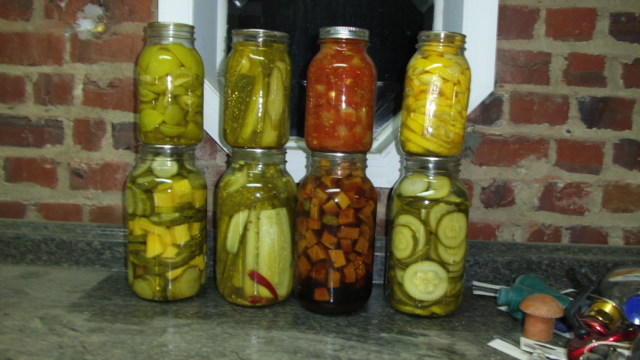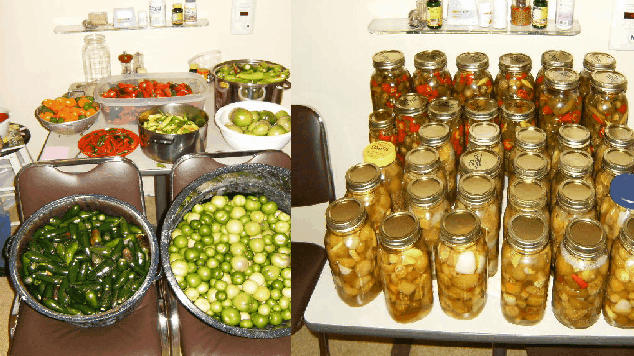 |
Don't have time? How Come.
 |
Canning produce from one's garden is both a cost-saver and tongue-pleaser. In Richmond, Virginia, in 2012, a square foot of garden yielded about $1.75 in produce. Thus, a five hundred square foot garden would save almost $1000 in food costs ... tax free, de facto income that would otherwise require $1500 or more in pre-deduction. In addition, the emotional benefits of private time in resetting one's mental attitude is worth many times more dollars. With penny-wise grow-till-you-glow you avoid dollar-dead shop-till-you-drop.
Yum, yum, yum. Rare will be the time when you open a jar of your making that you don't utter this or similar sentiment. If you know the difference between a store-bought tomato and a homegrown tomato, you can expect the same difference between storebought canned goods and homegrown canning.
With modern means, canning is easy. Like so many new endeavors, one should
start off simply before experimenting. The following guidelines are to help
the venturous babystep before flying like grandma in a kitchen.
In summary, start slowly and simply.
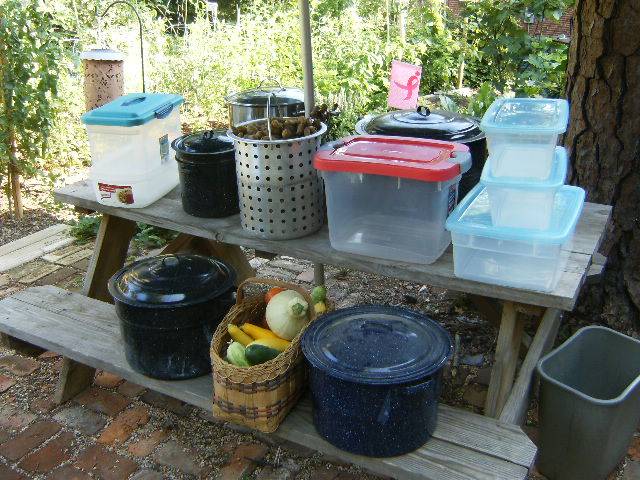 |
Each year as the garden grew, more canning occurred in quantity and variety as the garden grew. From 50 to 150 to 300 to 500 quarts in 2012.
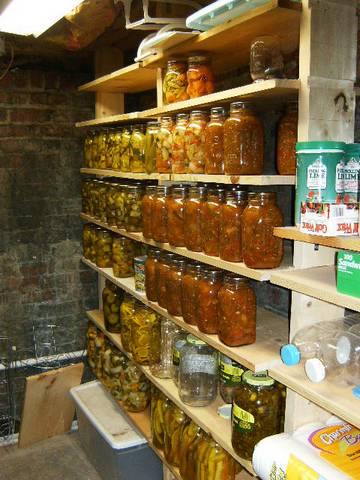
With more jars to store, the old coal room was converted into root cellar with a small AC in the wall to keep the summer temperature down. Ideal storage is 40 to 50 degrees with a 80 to 90 percent humidity. Expansion of shelving was needed.
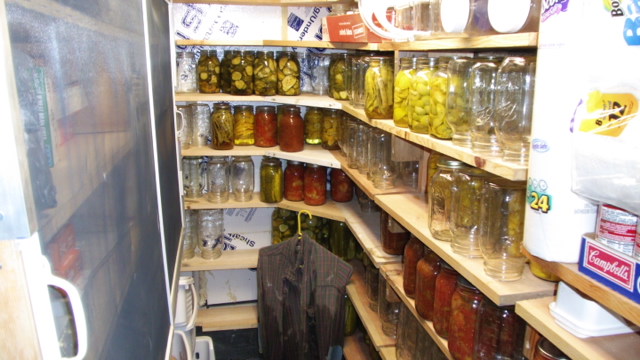
(The old half-wet shirt sets in a bucket of water to keep the humidity
higher.
Sometime, I'm going to replace the concrete floor with wooden slats for ground
based humidity.)
Because of cave gardening, the author's quota of pickled cucumbers was met by July 1st. The cucumber patch was given away to a neighbor. On July 7th, they went on a weeklong vacation cutshort by a medical emergency that eliminated their harvesting. By the end of July, two refrigerators were overflowing with cucumbers as well as buckets of recently picked cukes. It was a cukemania moment. Nothing to do but to can 'em. But, I wanted a before picture to convey the quantity. Where in your house would you put a bunch of cukes to convey the quantity?
?
?
?
?
?
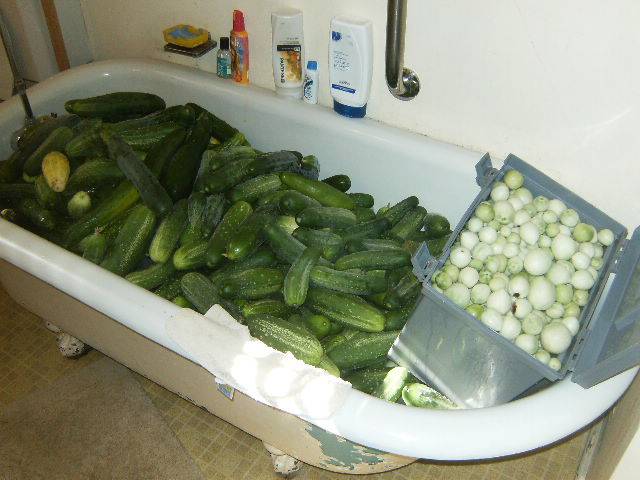
And, afterwards, where to put them? (The container on the right contains green tomatos removed from the vines of the larger tomatos, e.g., steak, big boy, jubilee, that only two or three tomatos instead of six or more are nurtured by the plant. The green tomatos can be used for many things like pickled relish. My favorite is pickled whole, halved or quartered for something that taste a lot like green olives!
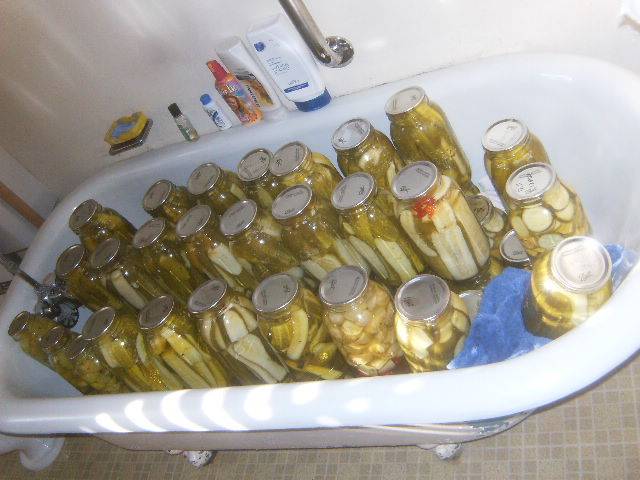
I use a lot of half-gallon jars (quarts on top of half-gallon jars). What can one say? Yumm!
